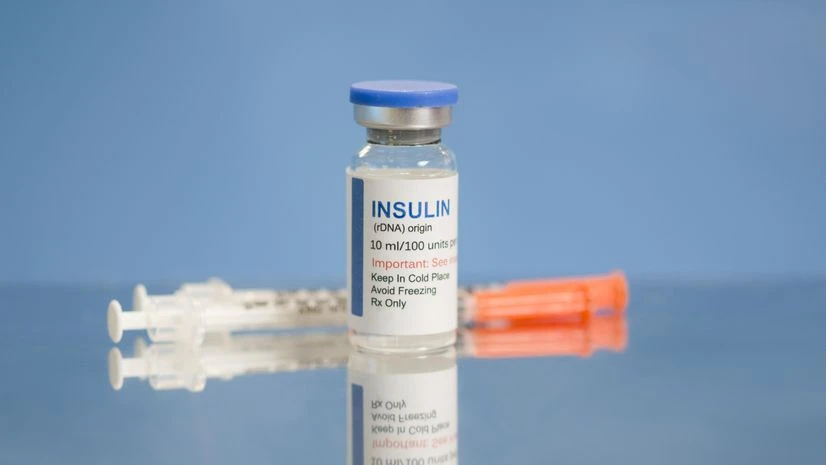Have you been feeling more tired lately, gaining weight around the belly despite eating right, or struggling with constant sugar cravings? It might not just be your hectic schedule—it could be insulin resistance, a silent metabolic red flag that’s increasingly making its way into Indian households.
What is insulin resistance and why is it dangerous?
Insulin resistance occurs when cells in your muscles, fat and liver do not respond properly to insulin—a hormone produced by the pancreas that helps regulate blood sugar. Insulin enables glucose to move from your bloodstream into your cells, where it is used for energy.
When this process is disrupted, your cells stop responding efficiently to insulin. Over time, this leads to pre-diabetes, type 2 diabetes, heart disease and metabolic syndrome. In simple terms, your body works overtime to keep blood sugar in check, and this chronic strain destabilises glucose levels, leading to serious health risks.
“Your brain cells may not receive enough glucose to function normally if blood glucose levels fall dangerously low (severe hypoglycaemia). This is a serious condition and calls for immediate medical attention,” said Dr Himika Chawla, senior consultant, endocrinology and diabetology, PSRI Hospital.
Conversely, if the pancreas produces too little insulin, glucose cannot enter your cells.
Also Read
“Your blood glucose level rises as glucose accumulates until it becomes too high. This is known as hyperglycaemia. You might develop type 2 diabetes if your blood glucose levels consistently remain high,” added Dr Chawla.
Why more Indian families are at risk today
According to a study published in the Indian Journal of Endocrinology and Metabolism, the prevalence of insulin resistance among Indian adolescents is rising. Approximately 20–25% of Indian youth aged 10–19 years are affected. With India often labelled the diabetes capital of the world, insulin resistance is a critical precursor.
The main drivers of this increase include:
- Sedentary lifestyles: Desk jobs, long hours and minimal physical activity
- High-carb, high-sugar diets: Roti, rice and sweets spike insulin levels
- Stress and poor sleep: Long commutes, excessive screen time and irregular sleep
- Genetic predisposition: South Asians tend to accumulate visceral fat even at normal weight. Historical food scarcity and famine may also play a role
“Compounding the issue is a cultural shift away from traditional, balanced diets towards refined grains and sugary foods, along with increased screen time and decreased physical activity,” said Dr Jaspreet Singh, endocrinology, Ujala Cygnus Group of Hospitals.
Early signs of insulin resistance you should never ignore
Insulin resistance often shows up subtly. Watch out for:
- Constant fatigue
- Increased hunger, especially for carbohydrates
- Weight gain around the belly
- Difficulty losing weight
- Unintended weight loss
- Darkened skin around the neck or underarms (acanthosis nigricans)
- Skin tags
- Brain fog, trouble focusing or blurry vision
- High blood pressure or cholesterol
- Excessive thirst and frequent urination
- Decreased testosterone, affecting reproductive health and fertility
“Crucially, insulin resistance is not a standalone condition but a driver of metabolic syndrome—a cluster of issues including high blood pressure, high triglycerides, low HDL (good) cholesterol and excess abdominal fat. Together, these greatly elevate the risk of heart disease, stroke and diabetes,” added Dr Singh.
“Gestational diabetes—that is, diabetes during pregnancy—increases the risk of developing insulin resistance. Certain medications, especially glucocorticoids or steroids taken over a long period, can also increase the risk. Medical conditions like polycystic ovarian syndrome, sleep apnoea, acromegaly or Cushing’s syndrome are all linked to high insulin resistance. Emerging evidence also suggests that low levels of vitamin D may contribute,” said Dr Pearlsy Grace Rajan, senior consultant, internal medicine, Rela Hospital, Chennai.
Lifestyle changes that can reverse insulin resistance
The good news is that insulin resistance can often be reversed through lifestyle changes and medical support, especially when caught early. Here is what helps:
- Move more, sit less: Aim for 30–45 minutes of exercise daily. Even a walk after meals improves insulin sensitivity and helps with sugar cravings
“We need to emphasise resistance or strength training at least thrice a week to build muscle mass, which improves insulin sensitivity,” said Dr Rajan.
- Follow a smart plate strategy:
“Be mindful of your carbohydrate intake, and also the time of day you consume them,” added Dr Rajan.
Choose whole grains over white rice or maida, include protein in every meal (dal, eggs, paneer, lean meats), and add fibre through fruits and vegetables.
- Avoid processed foods and sugary drinks: Packaged snacks, juices and sodas can worsen insulin resistance
- Prioritise sleep: 7–8 hours of uninterrupted sleep helps regulate blood sugar and appetite hormones
- Manage stress levels: Yoga, deep breathing, meditation and time away from screens help. Activities like painting or playing music also support stress reduction
Tests to diagnose insulin resistance in India
Insulin resistance is usually diagnosed through the HOMA-IR (homeostatic model assessment of insulin resistance) test, which measures fasting insulin and glucose levels. The HbA1c test, which shows average blood sugar over 2–3 months, is also useful.
These tests are available at most diagnostic labs and typically cost between ₹920 and ₹1,300.
How Indian families can tackle it together
Insulin resistance is not just a personal health concern—it affects entire families. Shared habits like daily walks, eating home-cooked meals and scheduling check-ups can help Indian households prevent this growing threat.
Insulin resistance may be silent, but its consequences are loud. The earlier you act, the better your chances of preventing diabetes and living a full, energetic life. Prevention isn’t just better than cure—it’s simpler, cheaper and smarter too.
For more health updates, follow #HealthWithBS
This report is for informational purposes only and is not a substitute for professional medical advice.

)